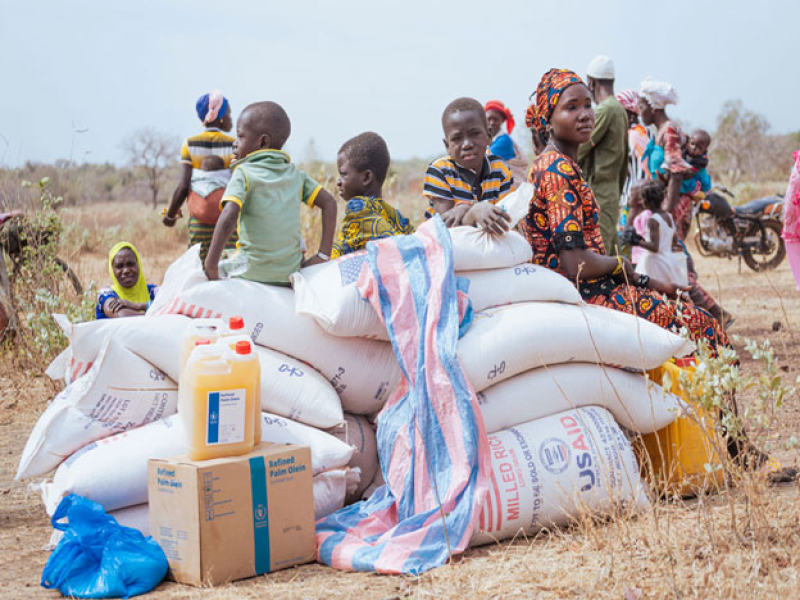- Trump considering military options on Greenland; Europe rejects |
- Fertiliser crunch threatens Kushtia’s onion boom despite high prices |
- Security Council Divided on United States' Venezuela Action |
- Over 1.53m voters register for postal balloting: Shafiqul Alam |
Funding Cuts Threaten Future of Localization in Global Aid

The withdrawal or scaling down of funding by agencies like USAID, FCDO, the Dutch MFA, and Germany’s BMZ raises critical questions about the future of development finance and the feasibility of locally-led development.
In recent years, major international donors such as the European Union (EU), the Foreign, Commonwealth & Development Office (FCDO), USAID, and other bilateral agencies (such as BMZ, Sida, and the Netherlands) have significantly reduced development funding to Global Majority countries.
These shifts are taking place amid rhetorical commitments to localization and “shifting the power” to local civil society organizations. This article explores the paradox of decreasing official development assistance (ODA) alongside a growing emphasis on localization.
It also examines the rise of remittances as an alternative capital flow, asking whether this shift signals a structural transformation in global development finance or simply reinforces existing inequalities.
The Grand Bargain committed donors and aid organizations to channel 25% of funding to local actors by 2020—a target that remains unmet five years past the deadline. In reality, only 1.2% of total humanitarian funding went directly to local organizations in 2022.
Drawing on academic literature, donor trend analyses, and policy discourse, this article argues that while localization remains a compelling imperative, the reduction in traditional aid risks hollowing out the resource base needed to realize it meaningfully.
The international development sector is experiencing a contradictory moment. On one hand, calls for localization—the transfer of resources, decision-making, and leadership to local actors—have grown louder, particularly after the Grand Bargain of 2016 and through recent "decolonizing aid" discourse.
On the other hand, bilateral and multilateral donors that once underwrote the bulk of development finance are retreating, citing domestic fiscal constraints, geopolitical shifts, and prioritization of emergency spending.
The withdrawal or reduction of funding by agencies like USAID (in certain regions), FCDO, the Dutch Ministry of Foreign Affairs, and Germany’s BMZ raises critical questions about the future of development finance and the feasibility of locally led development.
This article examines these shifts through a power-sensitive lens, questioning whether the decrease in ODA—and the increase in remittances and private flows—marks a reordering of global development relationships.
1. Decline in Traditional Donor Funding
Traditional donors, particularly from the OECD Development Assistance Committee (DAC), have been reducing long-term development assistance. The FCDO has cut aid to many African countries since 2020, citing Brexit-related restructuring and domestic budget pressures.
In 2023, the Netherlands announced it would refocus its development cooperation on fewer themes and regions, withdrawing from several African partnerships. USAID has shifted toward more geopolitical objectives under the Indo-Pacific strategy, quietly closing or transitioning some Sub-Saharan programs to local ownership with fewer resources.
According to OECD data (2024), while ODA rose nominally in 2023 to USD 223.7 billion, most of the increase was due to in-donor refugee costs and support to Ukraine—not long-term development programming. Country-programmed ODA has stagnated or declined in many contexts.
2. Localization: Rhetoric vs. Resourcing
Localization, broadly defined as empowering local actors to lead humanitarian and development efforts, remains a policy priority in theory. However, actual resource flows have not matched commitments.
The 25% funding target set under the Grand Bargain has not been met, and the minimal 1.2% of direct humanitarian funding to local actors in 2022 reflects deep structural inertia.
Large INGOs and UN agencies continue to dominate due to perceptions of capacity, fiduciary reliability, and donor risk aversion. This results in what Featherstone (2021) calls “localization without power”—local actors are asked to lead but are not given control over resources.
Donors increasingly push localization responsibility onto intermediaries or local partners without adjusting funding mechanisms. As a result, many local groups remain trapped in subcontractor roles, executing externally designed projects with limited decision-making power.
Without core, flexible, and multi-year funding, localization risks becoming performative. Real progress demands dismantling compliance-heavy systems that block equitable access.
3. Remittances: A Parallel Flow?
Remittances to low- and middle-income countries reached an estimated USD 669 billion in 2023, up from USD 647 billion in 2022. In countries like Zimbabwe, Nigeria, and Nepal, remittances exceed ODA, playing a crucial role in household income, healthcare, and education.
While remittances are private and unprogrammed, their growing scale raises questions about their developmental potential. Some scholars argue they are a more direct and accountable form of development finance. Others caution they shift public service responsibilities to the diaspora and do not support systemic change.
Unlike ODA, remittances rarely fund advocacy, civic engagement, or policy reform—areas essential to long-term change. Thus, they supplement but cannot replace public development financing.
4. Impact on Local Organizations and Civic Space
Cuts to traditional donor funding, especially in civic, women’s rights, and environmental programs, are creating funding gaps for local organizations.
This is also increasing scrutiny of intermediary INGOs, raising questions about their continued relevance if funds can go directly to local actors.
However, local CSOs are now expected to professionalize and absorb risks without core or long-term funding. Without stable resources, they cannot invest in staff, systems, or advocacy work—creating a paradox where localization is encouraged but underfunded.
5. Conclusion: Toward a Just Transition in Aid
Today’s funding realities call for a rethinking of power and money in aid. If localization is to be transformative, it must include shifting not just delivery, but also funding and authority.
A just transition requires equity, reparative justice, and co-governance between donors and local actors. Without meaningful financial reform, localization risks becoming an exit strategy for donors rather than a pathway to lasting change.

